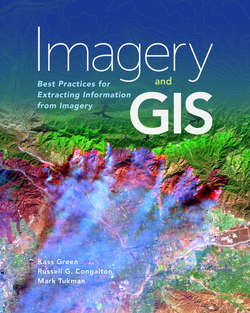Читать книгу Imagery and GIS - Kass Green - Страница 46
На сайте Литреса книга снята с продажи.
Agility
ОглавлениеAgility refers to the ability of the platform to change position and can be characterized by 1) reach or the ability of a platform to position itself over a target, which is sometimes referred to as field of regard; 2) dwell time, which is how long the platform can remain in the target area working; and 3) the ability to slew across the target area.
Fixed platforms such as a traffic-light pole above a street intersection have no agility. Satellites are tied to their orbits, which restricts their agility. However, some satellites are pointable (e.g., able to slew off nadir), which makes them much more agile than nonpointable satellites. This, coupled with their ability to quickly orbit the earth, provides them with a long-range reach around the globe, which is not available to aircraft.
Within their range, aircraft and fixed-wing UASs are more agile than satellites, and helicopters are more agile than fixed-wing aircraft. The hovering abilities of helicopters and rotor-winged UASs allow them to obtain more target specific data than fixed-wing aircraft can collect, and they can more easily reach targets in a congested airspace. Blimps and remote-controlled balloons have greater mobility than hot-air balloons because they have engines and are more maneuverable.
